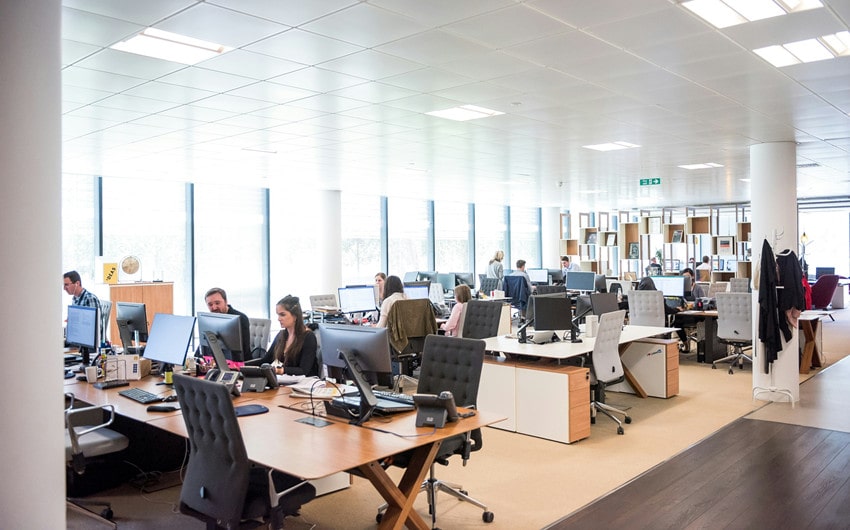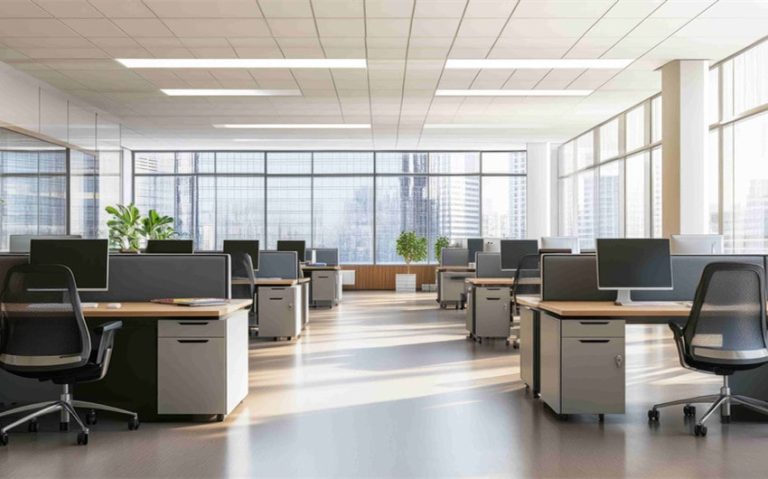Smart HVAC Solutions Enhance Workplace Productivity
Want to improve your office productivity without changing a single work process? Most business owners think new software, improved training programs, or optimizing workflows is the only way to boost employee performance. But there’s a much simpler solution that almost no one ever considers.
Your HVAC system.
Improving the work environment through smart hvac systems can lead to up to a 10% productivity improvement. Better focus, fewer sick days, happier employees. Doesn’t that sound nice?
In this guide, you’ll discover:
- How Office Climate Impacts Employee Performance
- The Hidden Cost of Poor Air Quality
- How Smart HVAC Technology Improves Focus
- Temperature Control and Cognitive Function
- The Numbers Behind HVAC Improvements
How Office Climate Impacts Employee Performance
Let’s talk about the last time you tried to do any work in a poorly ventilated conference room or an office that seemed more like an icebox than a workspace.
Productive, right? Not likely.
Here’s the deal: your brain needs oxygen to perform at its peak. If indoor air quality drops or temperatures get too hot or too cold, employee performance quickly declines.
Commercial hvac systems of old just heated and cooled. But modern commercial building hvac systems in Tennessee and Mississippi take it to the next level with smart sensors, automated controls, and air quality monitoring for the optimal workspace environment.
Harvard studies show employees working in well-ventilated offices with superior hvac systems had double the cognitive function of those in spaces with average air quality levels.
Now that’s a serious performance gap. And all of it boils down to your building’s climate control system.
The Hidden Cost of Poor Air Quality
How much money are you losing every year to bad indoor air quality? I bet you have no idea.
Let me explain: offices and other indoor spaces are full of pollutants from carpets, furniture, cleaning products, and even office equipment like printers and copy machines. If ventilation is inadequate, these pollutants accumulate over time and silently impact your team’s health and productivity.
But you can see the numbers: Harvard assistant professor Joseph Allen’s research has determined productivity benefits of $6,500 per person per year when air quality is improved through increased ventilation. The best part? It costs less than $40 annually per employee to double the ventilation rate in most commercial buildings.
We’re talking about incredible ROI that most companies simply ignore.
Air quality affects more than comfort. It can cause:
- Increased sick days
- Poor focus and concentration
- Slower response times
- Employee turnover
- Cognitive performance
Indoor air pollution alone can cut productivity by 5-6% through particulate matter. Add in volatile organic compounds from office supplies and decor, and cognitive scores can fall by as much as 13%.
Smart HVAC Technology Improves Focus
Smart hvac systems are about more than heating and cooling. They actively monitor and adapt your building environment to maintain an ideal workspace for peak productivity.
Newer systems use internet of things (IoT) sensors to track:
- CO2 levels
- Temperature variations
- Humidity
- Air quality data
- Occupancy patterns
This data goes to a smart controller that automatically adjusts ventilation, filtration, and temp based on real-time feedback. No more waiting for someone to notice the room feels stuffy or way too cold.
The global smart HVAC control market size was $10.56 billion in 2023, but it’s projected to grow to $26.80 billion by 2032. Businesses are finally waking up to the fact climate control has a huge impact on their bottom line.
Kind of cool, huh?
These systems even learn how your building operates. They’ll pre-cool spaces before workers arrive, ramp up ventilation during high-occupancy periods, and scale back energy use when areas are vacant.
This translates to better air quality when people are actually working. And better working conditions mean better employee performance.
Temperature Control and Cognitive Function
Temperature isn’t just a comfort issue. It directly correlates with cognitive function.
Office temps that drift from the optimal range will see sharp declines in cognitive performance. Most employees prefer between 68°F and 72°F, but older hvac systems often leave you with hot and cold spots throughout a building.
Smart systems can fix this issue with zone control. Different areas of a building can have different set points to account for:
- Sunlight exposure
- Equipment heat output
- Occupancy levels
- Individual comfort preferences
This kind of targeted approach means everyone works in their ideal temperature range. No more arguing over the thermostat or people being uncomfortable all day.
The result? Better focus, faster problem-solving, and decision-making across your organization.
Real Numbers Behind HVAC Improvements
Enough theory. Let’s get to the real numbers. The Lawrence Berkeley National Laboratory found indoor air quality improvements can increase workplace performance by 10%.
Let’s apply that to your business. If you have 50 employees at $60,000 salaries on average, a 10% productivity boost is like gaining five full-time employees worth of extra work output.
And you didn’t hire anyone. You just fixed your HVAC system.
Beyond productivity, there’s an absenteeism benefit as well. Employees will take fewer sick days when not constantly dealing with poor air quality and extreme temps.
Research shows the payback period for air quality improvement is just 2 years. After that, you’re raking in pure profit from productivity gains and reduced sick time.
In one economic analysis, the benefits of optimizing air quality were found to far exceed costs by a factor of 59x. That’s one of the highest ROI business improvement strategies you can find.
Making The Switch To Smart HVAC
A smart hvac system upgrade doesn’t have to be a complex or massive investment. You can often retrofit modern systems into existing buildings without tearing everything out and starting over.
It starts with an assessment of your current hvac system. Be on the lookout for:
- Poor air circulation areas
- Temperature inconsistencies
- High energy bills
- Comfort complaints from employees
All of these are signs that your current system isn’t performing as it should be. Smart technology upgrades can address all of these issues and more while helping productivity across your entire business.
The key is partnering with the right experts. You need professionals that understand both the tech and its implications for employee productivity. They can then craft a solution that’s customized for your building, your budget, and your unique requirements.
Bottom Line
Smart hvac systems are more than just temperature maintenance. They are a proven way to increase employee productivity, lower absenteeism, and boost your business results.
The science is in. Better air quality and optimal temperatures lead to better cognitive performance. And better cognitive performance means better business performance.
Productivity benefits alone of $6,500 per employee annually with a payback period of just two years make HVAC system upgrades one of the smartest business decisions you can make this year.
Your competition is already making the move. Buildings with smart climate control see better tenant retention, longer employee tenure, and significantly improved performance across the board.
Don’t let bad air quality and dated hvac systems drag down your business. There’s the tech available right now to create the perfect working environment for your people.
All you have to do is take the first step.







